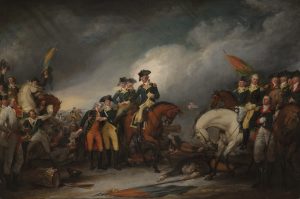
1870 American History Summary
1. The 15th Amendment to the Constitution was ratified on 15th February granted African American men the right to vote by declaring that the “right of citizens of the United States to vote shall not be denied or abridged by the United States or by any state on account of race, colour, or previous condition of servitude.”
2. A California court rules in White vs. The flood that a black child may not attend a white school, setting the legal precedent for school segregation.
3. Congress approves the Indian Appropriations Act, which ends the practice of treating Indian tribes as sovereign nations by directing that all Indians be treated as individuals and legally designated “wards” of the federal government. The act is justified as a way to avoid further misunderstandings in treaty negotiations, where whites have too often wrongly assumed that a tribal chief is also that tribe’s chief of state. In effect, however, the act is another step toward dismantling the tribal structure of Native American life.
4. In 1870, John D. Rockefeller and associates incorporated the Standard Oil Company, establishing what quickly became the world’s largest oil refinery complex.
5. 1870, 15th Amendment gives blacks right to vote.
6. 1870 Robert E. Lee dies, October 12.
7. The 1870’s saw increasing belligerence by Native Americans as more and more of their land was taken away by white migration. Now settlers were coming not only from the east but from the populated areas of the west and southwest.
8. When gold was discovered in 1874 in the Black Hills of South Dakota, federal efforts to keep miners off the sacred Indian land failed. The Indian’s main source of livelihood, the buffalo, was being hunted to extinction. The buffalo which had numbered four million in 1870 was reduced to only a half million in 1874.
9. In an attempt to improve their condition, farmers in the 1870s decided to organize. They created numerous organizations including the Patrons of Husbandry or Grange, the National Farmers’ Alliance, the National Farmers’ Alliance and the Industrial Union, and the Southern Alliance. Working within existing political parties, farmers attempted to bring about political change. They managed to gain control of several state legislatures and to enact state laws which regulated railroads.
10. The 1870 U.S. Federal Census was the ninth enumeration of the United States population and represented nearly 23% growth over the previous census. The official date was June 1, 1870, and enumerators had five months to complete their work.
11. In 1870, the first U.S. census to report child labor numbers counted 750,000 workers under the age of 15, not including children who worked for their families in businesses or on farms. By 1911, more than two million American children under the age of 16 were working – many of them 12 hours or more, six days a week. Often they toiled in unhealthful and hazardous conditions; always for minuscule wages.
12. 1870 Jules Verne’s Twenty Thousand Leagues under the Sea published.
what happened in 1870 in American history, American history 1870 to 1920, what happened in the 1870s in America, what happened in 1860 in American history, what happened in 1880 in American history, 1860s American culture, 1877 us history, 1890 us history
